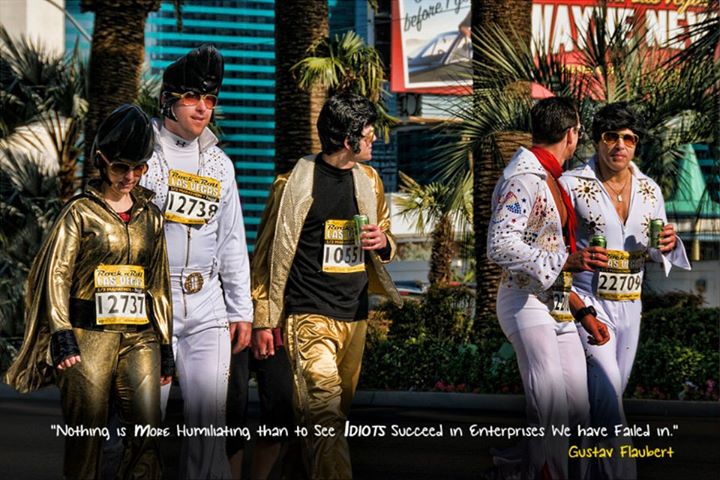“T he first rule of Running Club is that you DO NOT stop talking about running.”
he first rule of Running Club is that you DO NOT stop talking about running.”
It starts with the couch-to-5k running programme. This is a relatively gentle start to talking about running, with typical sessions involving only talking about running for a minute or so before resting for another minute while someone else talks about something else before you continue to talk about running. A good way to start is to talk about all your new gear – your suspicion that “gait analysis” may have a slightly dodgy scientific basis and that that nice bloke at the shop might not be fully-qualified podiatrist, but having said that, your new shoes fit brilliantly and running now feels so much easier on your joints.
Once you’re a couch-to-5k graduate, you get to talk about Parkrun – free, weekly, inclusive 5k runs which take places all over the UK (and Ireland, and a few other places) on Saturday mornings. You can talk about how surprised you were about how supportive everyone was, and about perhaps how you felt like a real runner for the first time, and about how they’re open to everyone from serious club runners to couch-to-5k graduates. After you’ve been a few times, you can start talking about “PBs” and how much time you’ve beaten your previous best by, and what your target is now. You can drop “building towards a sub-25” into your conversations.
So once you can run 5k without stopping, you can probably talk about running non-stop for a decent length of time. Attempting a 10k sounds daunting, as you’re doubling the duration of both running and talking about running. But the first 5k/30 minutes is the hardest, and after you’ve done that it’s easier than you’d think to build towards 10k by doing more of what you’ve been doing. By this time (if you’re not already) you might be a member of a local running club or a lone wolf getting advice off the interweb. And you’ve got a whole more terms to sprinkle your running talk with…. tempo runs, hill training, the LSR, interval training, fartleks. You might even be talking about being able to run “negative splits” on race-day, though you should probably explain that’s a good thing and not a terrible injury. And if you did join a running club, you’ve got all your new mates to talk about as well as regional cross country or summer league races.
So things are going great – double it again, add interest, and you’re at the half marathon stage. At this stage, you must seriously advise anyone who’ll listen (and those who won’t) that a half marathon is not a half of anything, and although that’s logically and mathematically false, if you say it in a serious enough tone, no one will pick you up on it. At half marathon stage, you can litter your running talk with pacing strategies and “race day” strategies, carb loading, and about not wanting to be overtaken by a bloke dressed as a gorilla.

If you’re a bloke, you can regale your soon-to-be-former friends with tales of nipple chafing, and associated micropore/vaseline dilemmas, and of course there’s runner’s trots (- if you don’t know, don’t ask).
And this the stage I’m at at the moment. I’ve run five half marathons and I’m going to run my first full marathon in Nottingham at the end of September. I can comfortably talk about running for at least three hours, but on race day I’m going to have to stretch it out to between 3:45 and 4:00 to go the full distance. My training is going really well, and I can’t be happier at the progress I’m making in turn into a monumental bore. I’m having to spend a full three hours every weekend out on my “long slow run”, talking about “nutrition” and I’ve even caught myself referring to the question of what snacks to take with me as a “refuelling strategy”. Believe me, that all this is turning me into a five star prick, and my only redeeming feature is that I don’t wear lycra for training or racing.
And that’s before we get started on requests for sponsorship. So far in my running career I’ve taken the view that it’s basically my leisure activity and I shouldn’t ask people to donate their money to a charity of my choice whose work is clearly in my own interest. But this is a marathon… it’s a monumental challenge even for a semi-regular half-marathoner and underwhelming club runner like me, and to be honest I’m scared. So scared that I have to spend ages talking about it getting reassurance.
So, for the first and almost certainly last time, I’m asking for sponsorship.

If the excellent work that Crohn’s and Colitis UK do won’t motivate you to sponsor me, and if you’ve not got sufficient value out of my blog in the last few years to warrant even a small donation, then please consider the effect of all this on my ever-more-distant-nearest and dearest. Won’t someone think of my colleagues, who dare not ask “how was your weekend” in my hearing any more?
And if all that doesn’t move you, consider this….. at least I’m not a cyclist. Cyclist bores are the worst.

